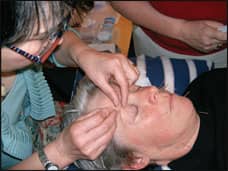By Alexander Zuriarrain, MD, FACS
What owes its early roots as a technique to cover and enhance healing of truncal wounds in World War I has become one of the most requested cosmetic procedures in the field of plastic surgery. Abdominoplasty, often called the “tummy tuck,” has undergone an amazing evolution. Not a weight-loss procedure, abdominoplasty is recommended for strengthening lax abdominal musculature and removing excess subcutaneous tissue and abdominal skin following multiple pregnancies, significant weight loss, or various medical conditions.
Gone are the days of extensive postoperative recovery and fears of consequential complications. Advancements in anesthesia safety, better management of pain and nausea, and surgical approaches that reduce risks now allow the procedure to be performed even on an outpatient basis. Indeed, by 2019, a year before the COVID pandemic reduced the number of elective surgeries in general, abdominoplasty had reportedly become the fourth most common cosmetic procedure in the United States—with more than 140,000 operations performed in that year.
All that said, has abdominoplasty reached a level of near perfection in the hands of the experienced surgeon? Not quite. In a study published in a 2018 issue of Aesthetic Plastic Surgery, authors opined the “classic abdominoplasty is still associated with a significant rate of complaints from patients, such as: fullness of flanks and epigastric areas, lack of a posterior lumbar curve, hanging skin over the incision line, and visible scars over the flanks and beyond underwear or swimming suit coverage.” Even as recently as April 2022, the author of an online article in emedicine.medscape.com states, “The primary focus for the future [should be] to minimize the amount of surgery necessary to maximize the surgical result.”
Thanks to some noteworthy advances and trends in abdominoplasty, that writer’s advice seems to be drawing closer to reality.
Going Beyond Lipoabdominoplasty
The relatively recent marriage of two techniques—abdominoplasty and liposuction—was hailed a major evolutionary step toward enhancing body contouring, while reducing the number of revision abdominoplasties due to patient dissatisfaction with the first procedure. In lipoabdominoplasty, the surgeon applies aggressive truncal liposuction to remove fatty deposits from the subcutaneous tissue. Then the skin underneath the umbilicus is excised, abdominal muscles are tightened, and the skin is pulled down and closed with sutures. The ideal results are a well-sculpted midsection, with less scarring and a lower rate of complications, including swelling, bruising, and development of small pockets of fluid, or seromas.
“Abdominoplasty with liposuction…produces the highest level of patient satisfaction, and patient satisfaction represents a golden goal [in practice],” conclude authors of a May 2020 study in QJM: An International Journal of Medicine.
Today, however, experts are advancing the technique even further, demonstrating the clinical successes of what they call lipoabdominoplasty with anatomical definition. A 2020 study in Plastic and Reconstructive Surgery contends this procedural variation achieves “more natural results” by avoiding a “completely flat abdomen.”
The desired, contour effect comes from differentiating areas of the patient’s abdomen “for an intense or moderate liposuction and the areas for superficial and deep liposuction for anatomical definition.”
Monsplasty, Lower Incision Scars, and Other Trends
Meanwhile, increasing in popularity is the inclusion of monsplasty with abdominoplasty for female patients. A monsplasty provides a lift for the mons pubis—the mound of fatty tissue over the pubic bone—which is larger in women than in men and can sag due to weight gain, age, pregnancy, and childbirth. Changes in the mons pubic can affect a woman’s daily activities, including the enjoyment of sex and difficulties in urination.
Other important trends in abdominoplasty include:
- Deep abdominal muscle repair to pull together muscles stretched during pregnancy, major weight gain and then loss, and certain medical conditions.
- Surgical approaches that minimize need for drains during and after an abdominoplasty.
- Proper positioning and redesign of the patient’s navel following tightening and contouring of the truncal skin.
- Lowered incisions so that a scar does not appear above the swimsuit line.
- When appropriate, the use of high lateral tension abdominoplasty—a technique which tightens skin both vertically and horizontally across the abdomen. Although considered “under-utilized,” this approach helps “cinch the waistline and accentuate hips” to give women a more feminine figure and men a “more athletic look,” writes plastic surgeon Kiya Movassaghi, MD, in a 2022 blog.
- Radiofrequency- or ultrasound-assisted skin-tightening; “Mini-Tuck;” “Awake Tummy Tuck,” which can be performed in the doctor’s office under local anesthesia; and similar modified procedures. These cosmetic approaches are designed for patients who simply want to cover an abdominal C-section scar or present with skin laxity not significant enough to merit a full abdominoplasty but excessive enough to require more than liposuction.
- Body contouring that is highly individualized to the patient.
Abdominoplasty Beyond Self-Esteem
As is true for most cosmetic procedures, patients request consideration for an abdominoplasty to enhance appearance and, more importantly, self-esteem. But boosting how one feels about himself or herself is not the only reason to perform the procedure. Research published in 2018 in Plastic and Reconstructive Surgery states abdominoplasty with muscle repair not only restores the pre-pregnancy shape of the female abdomen but can relieve post-childbearing symptoms of back pain and urinary incontinence.
Of course, the success of this or any procedure depends on careful patient selection and preoperative planning. Ideal candidates for abdominoplasty are in generally good health and have a moderate body mass index (30 or less). Contraindicated are patients who smoke, suffer severe chronic conditions like diabetes and heart disease, plan to become pregnant in the future, or have a significant amount of scar tissue from a prior abdominal surgery.
Future Evolution of Abdominoplasty
In the words of the authors of the 2022 article in emedicine.medscape.com, “The art of trunk body contouring is continuously evolving and will continue to evolve.” Indeed, even endoscopes are expected to become increasingly important tools in abdominoplasties as these procedures become more minimally invasive. As plastic surgeons, our challenge is to keep pace with rapid change so that we are always on the cutting edge of what is best for our patients.
Alexander Zuriarrain, MD, FACS, is a board-certified plastic surgeon and owner of Zuri Plastic Surgery in Miami. Listen to a podcast PSP did with him here.




